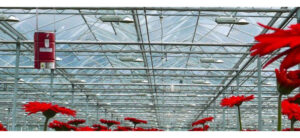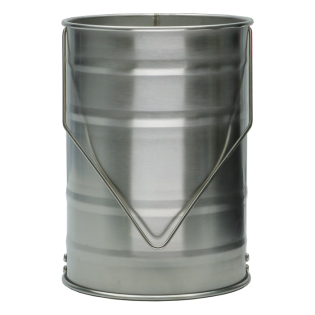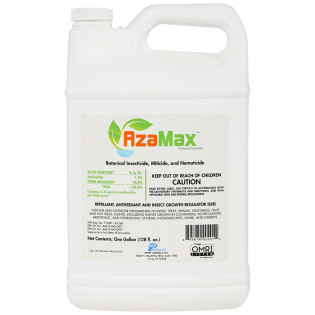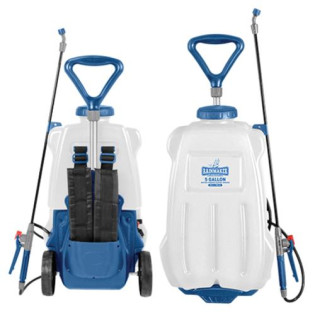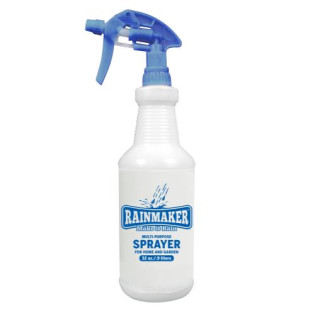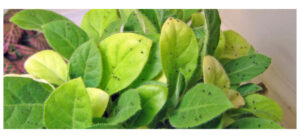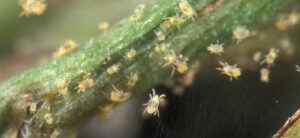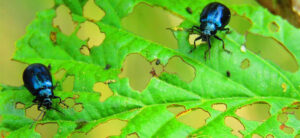
Curious about the potential of sulfur for pest control? This article will tell you everything you need to know.
Sulfur is a natural pesticide that has been used for generations to interrupt the growth, development, and life cycle of many kinds of pests. It doesn’t work in all situations, but for some garden dilemmas, sulfur might be the solution you are looking for.
It might be hard for you to believe that something as simple as sulfur can make such a huge difference when it comes to the health of your plants. However, when you’re looking for an inexpensive pesticide, sulfur could very well be the solution you have been looking for.
Here are some tips on using and burning sulfur for pest control - as well as some precautions to keep in mind.
Does Sulfur Keep Bugs Away?
Sulfur is an element, one of the few that can be found in a pure form in nature without having to be combined with other elements. It is a naturally occurring pesticide that is included as an ingredient in several hundred different insecticide products. Of course, it can also be used by itself.
While the smell of sulfur is unpleasant, generally associated with rotten eggs, it offers more to gardeners than what meets the eye.

Not only can sulfur help keep bugs away from your plants, but it can also be used as a fungicide.
In addition to using sulfur as a foliar spray, it can also be vaporized or burned. This is the most common way it’s used to control bugs or fungi.
You can use sulfur on just about any kind of plant, including a variety of ornamentals, vegetables, fruits, shrubs, flowers, roses, etc.
What Pests Does Sulfur Kill?
Sulfur can repel both spider mites and chiggers, two pests that are members of the arachnid family. It won’t be quite as effective against pests like flies and beetles but can be very useful when going after other arachnid-related pests.
It’s also important to note that sulfur can be used as a fungicide. In fact, it is often used in fruit orchards to help prevent and treat brown rot, scab, and powdery mildew.
Sulfur spray can also be used to get rid of thrips and psyllids, offering gardeners a safe way to get rid of these pests.
Will Sulfur Hurt Plants If You Use It For Pest Control?
Sulfur can safely be used on a variety of plants including those grown both for edible and ornamental use. It is often used on plants like azaleas, lilacs, cedars, violets, hydrangeas, cosmos, sweet peas, and more.
When used correctly, sulfur does not harm plants. It's also nontoxic to humans and other mammals, though it can irritate the eyes and skin - so wear your protective eyewear and gloves, and avoid the grow room while it’s actively burning.
However, it’s important to understand how you should properly use sulfur before you decide to apply it.
Best Practices When Using Sulfur For Pest Control
Don’t apply sulfur as a foliar spray on days that are warmer than 80 degrees Fahrenheit. This can harm the tender foliage of your plants. It’s also not a good idea to combine sulfur with other oils or insecticides.

In general, you should wait to try another insecticide for at least 20 days after spraying with sulfur. This is because sulfur reacts negatively with oil pesticides and can create phytotoxicity, making plants extremely sensitive and often killing them.
Sulfur should not be applied to plants that are actively blooming. It has the potential to harm beneficial bugs, like bees, so you’ll want to apply sulfur either before or after the bloom for best results.
When it comes to burning sulfur for pest control, most agencies, including the EPA, recommend against this when working with indoor plants or greenhouse-grown plants.
When burned, the sulfur turns into a gas known as sulfur dioxide. Breathing in the gas can be harmful to human health and can sometimes damage plant leaves, too.
Therefore, it’s recommended to only use a spray when working indoors.
Sulfur For Pest Control - How Is It Used As A Pesticide?
When used as a pesticide, sulfur is sold as a powder, typically with particles of different sizes. It does not readily dissolve in water.

Because of this, it is sometimes sold as an aqueous emulsion or wettable powder. It can also be purchased as a dust, paste, or liquid.
When applying a sulfur spray, use a plastic sprayer. Sulfur can be abrasive to some types of metals.
To use sulfur as a pesticide, you will need to consult the instructions on the specific formulation you’ve purchased. Generally sold in a wettable form for use as a spray, it will need to be mixed with water (the rate at which will vary).
Sulfur Application Types, Rates, & Frequency
Your application rates will vary, too, and are also affected by the kind of disease or pest you’re going after and the plant you’re using the sulfur on. If you are trying to control chiggers, mites, or other arachnids, for example, you may want to use ready-to-use sulfur dust.
Again, the instructions will vary depending on the formulation you purchase and what plants you’re applying sulfur to. Always read these instructions to make sure the product is effective and so that you do not damage nearby vegetation.
When applying sulfur to your plants, be sure to wear protective gear like goggles, gloves, and long sleeves. It can be irritating to the skin, throat, and eyes. Wear gloves when mixing it up and spray in calm weather so that the wind doesn’t carry it to you.
Typically, when applying as a spray, you’ll start as soon as new growth appears in the spring. You can repeat applications every seven days - keep in mind that you will likely need to reapply after it rains. When you’re using a sulfur spray for disease control, you may need to reapply as often as every five days. Generally, you’ll mix with water at a rate of four tablespoons for every gallon of water.
If applying sulfur as a dust, just apply to all plant surfaces so that they are thoroughly covered. Do not re-enter a treated area for at least 24 hours after you have been treated with sulfur dust.
Most of the same application advice applies when growing indoor plants, too. Again, avoid burning sulfur if you’re trying to get rid of pests on indoor-grown plants. If you’re using any fans, shut them off before spraying. You should only apply sulfur in rooms that are well-ventilated.
Sulfur can be used up to within one day of harvest.
Final Thoughts On Using Sulfur For Pest Control In The Garden
Sulfur offers plenty of benefits for pest control in the garden but of course, like any pest control product, it is not without its disadvantages. For the most part, though, the benefits far outweigh any risks.
If you’re thinking about using sulfur for pest control in the garden, consider the tips we’ve given you above. Whether you choose to use sulfur or some other product, you will be able to find everything you need to grow the perfect bounty by shopping Hydrobuilder’s large supply of pest control products.





